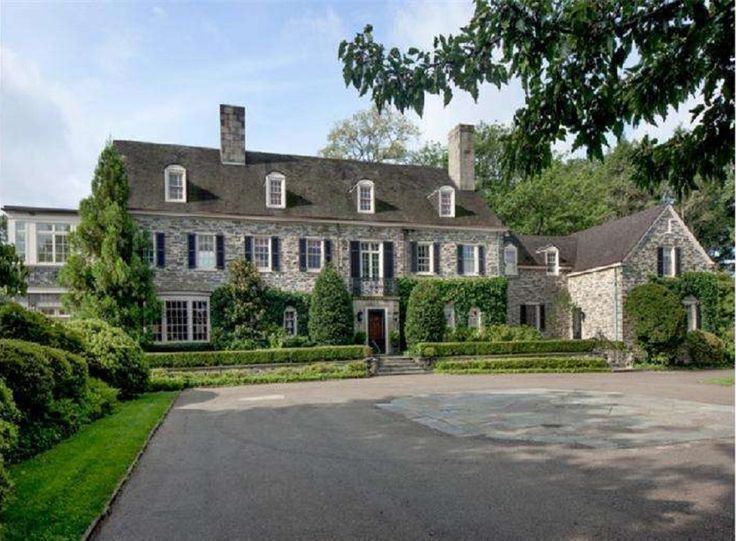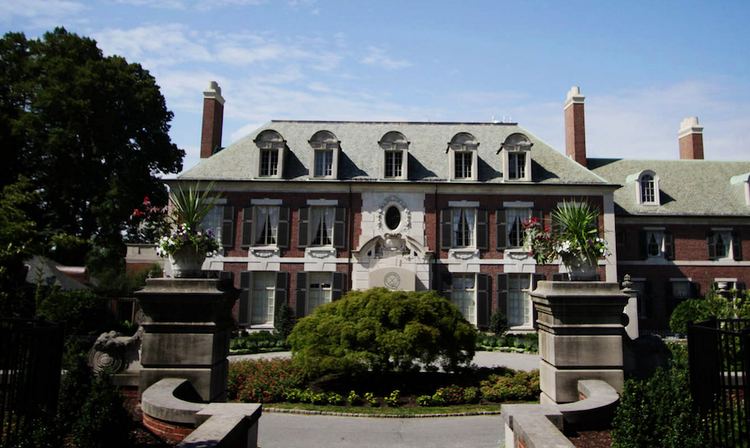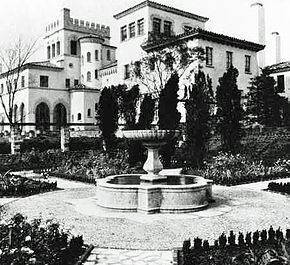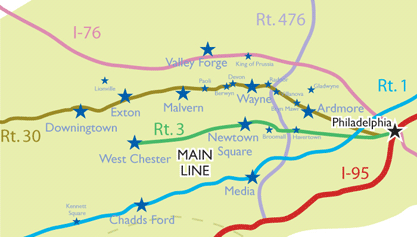 | ||
Experience a journey through the philadelphia main line
The Philadelphia Main Line, known simply as the Main Line, is an informally delineated historical and social region of suburban Philadelphia, Pennsylvania. Lying along the former Pennsylvania Railroad's once prestigious Main Line, it runs northwest from downtown Philadelphia parallel to Lancaster Avenue (US Route 30).
Contents
- Experience a journey through the philadelphia main line
- History
- The Main Line today
- Communities on the Main Line
- Demographics
- Transportation
- Recreation and attractions
- Sporting and social clubs
- Education
- Higher education
- Film
- Literature
- Music
- Television
- Sports
- Arts
- Entertainment
- Business
- Military Government Science
- References

The railroad first connected the Main Line towns in the 19th century. They became home to sprawling country estates belonging to Philadelphia's wealthiest families, and over the decades became a bastion of "old money". Today, the Main Line includes some of the wealthiest communities in the country, including Lower Merion Township, Radnor Township, Gladwyne, and Villanova. Today, the railroad is Amtrak's Keystone Corridor, along which SEPTA's Paoli/Thorndale Line operates.

History

The Main Line region was long part of Lenapehoking, the homeland of the matrilineal Lenni Lenape Native Americans (the "true people", or "Delaware Indians"). Europeans arrived in the 1600s, after William Penn sold a tract of land, called the Welsh Tract, to a group of Welsh Quakers in London in 1681. This accounts for the many Welsh place names in the area.
The Pennsylvania Railroad built its main line during the early 19th century as part of the Main Line of Public Works that spanned Pennsylvania. Later in the century, the railroad, which owned much of the land surrounding the tracks, encouraged the development of this picturesque environment by building way stations along the portion of its track closest to Philadelphia. The benefits of what was touted as "healthy yet cultivated country living" attracted Philadelphia's social elite, many of whom had one house in the city and another larger "country home" on the Main Line.
In the 20th century, many of these families moved to the Main Line suburbs. Part of the national trend of suburbanization, this drove rapid investment, prosperity, and growth that turned the area into greater Philadelphia's most affluent and fashionable region. Estates with sweeping lawns and towering maples, the débutante balls and the Merion Cricket Club, which drew crowds of 25,000 spectators to its matches in the early 1900s, were the setting for the 1940 Grant/Hepburn/Stewart motion picture The Philadelphia Story.
The railroad placed stops about two minutes apart, starting with Overbrook. The surrounding communities became known by the railroad station names which started at Broad Street Station in Center City Philadelphia and went on to 32nd St. Station, and then the Main Line stations: Overbrook, Merion, Narberth, Wynnewood, Ardmore, Haverford, Bryn Mawr, Rosemont, Villanova, Radnor, St. Davids, Wayne, Strafford, Devon, Berwyn, Daylesford, and Paoli. At least five of these station buildings, along with the first Bryn Mawr Hotel, were designed by Wilson Brothers & Company. Broad Street Station was replaced with Suburban Station in 1930, and 30th Street Station replaced 32nd Street three years later. Suburban service now extends west of the Main Line to the communities of Malvern, Exton, Whitford, Downingtown, and Thorndale.
The railroad line then continued on to Chicago, with major stations at Lancaster, Harrisburg and Pittsburgh. The railroad, since taken over by Amtrak, is still in service, although its route is slightly different from the original. It also serves the Paoli/Thorndale Line of the SEPTA Regional Rail system.
The Main Line today
Today, the "Main Line" is another name for the western suburbs of Philadelphia along Lancaster Avenue (U.S. Route 30) and the former Pennsylvania Railroad Main Line, extending from the city limits to, traditionally, Bryn Mawr and ultimately Paoli, an area of about 200 square miles (520 km2). The upper- and upper middle-class enclave has historically been one of the bastions of "old money" in the Northeast, along with places like Long Island's Gold Coast, Westchester County, New York, Middlesex County, Massachusetts, and Fairfield County, Connecticut.
It is home to some of the wealthiest communities in the United States, such as Gladwyne, which has the 14th highest per-capita income in the country for places with a population of 1,000 or more. The eastern section of Villanova also was ranked 39th in "The Elite 100 Highest Income Neighborhoods in America" with a median annual household income of $366,904.
Neighborhoods along the Main Line include nineteenth and early twentieth century railroad suburbs and post-war subdivisions, as well as a few surviving buildings from before the suburban area.
Communities on the Main Line
The Main Line proper is a line of communities extending northwest from the City of Philadelphia. From Philadelphia, the stations on what is now referred to as the Paoli/Thorndale (formerly "R5") Line are: Overbrook, Merion, Narberth, Wynnewood, Ardmore, Haverford and Bryn Mawr, which inspired the mnemonic "Old Maids Never Wed And Have Babies". The Main Line now encompasses many communities past Bryn Mawr including the Upper Main Line communities of Rosemont, Villanova, Radnor, St. Davids, Wayne, Strafford, Devon, Berwyn, Daylesford, Paoli, and Malvern.
Demographics
There is collective data for the Main Line, so all data is by ZIP code. In comparison, the median family income and home price for the state of Pennsylvania are $68,646 and $155,000, respectively. The following ZIP codes are those within the previously mentioned municipalities that make up the Main Line. All data, with the exception of average home price, are as of the 2000 census. For comparison, the median family income of Beverly Hills, California is $110,040.
Transportation
The Main Line is served by numerous different modes of transportation among which are three commuter rail lines operated by SEPTA. Connecting the region directly with Center City Philadelphia are the Paoli/Thorndale Line which shares the former Pennsylvania Railroad four track Keystone Corridor grade with Amtrak, and the Manayunk/Norristown Line which operates over the former Reading Railroad Norristown grade. The light rail Norristown High Speed Line runs over the Philadelphia and Western Railroad line between 69th terminal in Upper Darby to Norristown. Amtrak's intercity Keystone Service (New York City to Harrisburg) and Pennsylvanian (New York City to Pittsburgh) also serve the region with stops at the jointly operated Amtrak/SEPTA stations at Ardmore and Paoli.
The main thoroughfare through the Main Line is U.S. Route 30 which follows Lancaster Avenue (formerly the Philadelphia and Lancaster Turnpike) running east to west and serving as the backbone of the region by connecting a large majority of its towns and municipalities. Other highways serving the area are the Schuylkill Expressway (I-76) which connects it to Philadelphia, and the Blue Route (I-476) which runs north to south connecting the region with the Northeast Extension and the Pennsylvania Turnpike to the north, and to Philadelphia International Airport and I-95 to the south.
SEPTA also commissions suburban buses on Routes 105 and 106 to run from Upper Darby to Bryn Mawr, with rush hour service extended to Paoli. These buses run almost entirely along Lancaster Avenue.
SEPTA also offers light rail service through the Norristown High Speed Line. The Norristown High Speed Line runs along the Main Line from Upper Darby to Ithan Avenue Station and Villanova Station before making a northward turn at the junction of Lancaster Avenue and the Blue Route toward Norristown.
Recreation and attractions
Sporting and social clubs
Private clubs played an important role in the development of the Main Line, offering social gathering places and facilities for cricket, golf, tennis, squash, and horseback riding to wealthy or socially connected families. Among them are:
Education
The school districts that serve the Main Line are Lower Merion School District in Montgomery County, Radnor Township School District and School District of Haverford Township in Delaware County, and Tredyffrin/Easttown School District and Great Valley School District in Chester County. The region has numerous nationally ranked public and private schools. Among them are:
